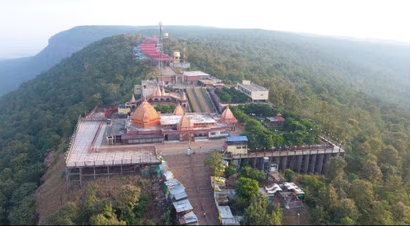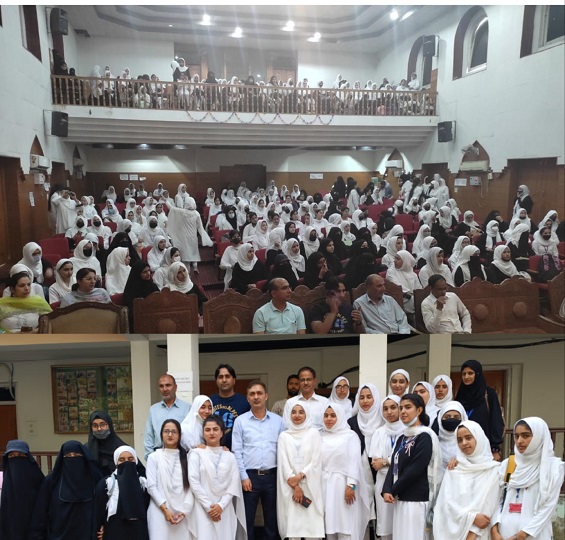India, a unique country drawing its sustenance from thousands of years of civilizational richness bequeathed by one of the greatest civilizations this earth has seen i.e. ‘Indus valley civilisation’ has always been characterized by religious tolerations. This may signify no more than forbearance and permission given by the adherents of a dominant religion for other religions to exist, even though the latter are looked with disapproval as inferior, mistaken or harmful. However religion is also sociological and the practice of toleration has always had political overtones as well. India though a multicultural, multi linguist and multi religious union of states has always been a beacon of faith and hope for the rest of the world to follow its basic tenet of humanism i.e. toleration in all walks of life. Despite being surrounded by countries all around with a theological footprint, India has never succumbed to the pulls and pressures exhibited by such countries impinging upon its social, moral and inter –religious fiber come what may. Dotted in its entirety from north to south and east to west with religious abodes of all hues and religions, the country as such presents a rainbow of colours, sights and sounds which may overwhelm an ordinary foreign traveller.
Central India & its religious abodes are no exception from the above. Having had a stint at Itarsi (MP) while in service I have had the chance of visiting and paying my obeisance at one of the most sacred temples relating to Goddess of power/Shakti symbolizing the elements of faith and resolve as enshrined in the Hindu religion and forming part of 52nd Shakti Peeth .Located at a place known as ‘Salkanpur ’the temple is situated in district ‘Sehore’ /Rehti in the midst of ‘Vindhyachal mountains and dedicated to Goddess ‘Vijayasanidevi.. At a distance of about 50 kms from Itarsi via Biora-Narmadapuram-Pilikararon NH-146B, the temple of ‘Vijay sani’ devi is one of the Goddess incarnate of ‘Ma Durga’. After having slayed demon ‘Raktbeej’ at this place on the request of Gods, the Goddess is said to have had gone into a trance –mediation mode acquiring the position of a slayer/killer in a winning stance like pose, hence the name Vijay (winner) –sani(position). The ‘Mahisasurmardini’ aka Ma Durga alias Vijaysani temple is perched on an imposing hillock of about 1000 (thousand) feet of the Vindhya ranges giving an onlooker /visitor a bird’s eye view of sweeping area with the NH146B running close by. The temple is stated to be more than 400 years old dating back to the Mughal times. To access this famous Goddess temple a pilgrim has to climb more than 1451 stairs, which has been made easy by the construction of an excellent road axis right till the top of the mountain.In the sanctum sanctorum of this Goddess temple there are two eternal lamps burning for the last 400 years, one being fed on coconut oil and the other pure Desi Ghee.
Salkanpur temple has all the major characteristics of ‘Central India temples’ which are based on the ‘Nagara style of architecture’ which are further classified into different types according to the region where they are located. Madhya Pradesh has some of the most profound and oldest surviving Nagara style structured edifices dedicated to the Hindu religion dating back to ‘Gupta period’. Here each shrine is on 4 pillars that support a small ‘Mandapa’ that look like a small square ,porch like extension before an equally small room that served as ‘Garbhgriha’ or the Sanctum sanctorum . The temple of Goddess at this place has a very interesting story of its inception. Though there are many stories doing rounds as well as legends floating around its inception, the most credible and having a written /oral record passed on through generations is that of an interesting tale wherein it is believed that once a group of shepherds / Banjara community people in the business of selling and buying animals in this general area while having a long distance halt lost all their cattle stock with no sight of them. Distraught by their colossal loss they chanced upon a little girl who understood their predicament and pointed to a place by throwing a stone thus indicating to them that they would be helped in their endeavors by a Goddess where her stone fell. On searching the area more thoroughly they sure enough found all their cattle stock intact guided by the intervention of divineprovidence. Humbled by the experience the community thought to erecta suitable memorial in the form of a temple for the Goddess at that particular place.Hencethe existence of this temple Goddess in all her gaiety and finery.
This revered place is also famous for carrying out the annual ‘Maghmela’ in the month of February year on year as also the world famous Navratra festival. Lakhs of devotees troop in from all over the country and even abroad for this profound experience. This temple Goddess is also famous for the annual animal fair wherein animals from far and wide with their care takers/ sellers alsoundertake long journeys from as far as UP, Rajasthan, Bihar etc with lots of fanfare. It is quite surprising that till 1970 only a few hundreds of pilgrims/visitors used to visit this temple with the footfall not exceeding at the most about 5000 in a year. But changing times, media blitzkrieg, affordability of mobile phones, etc have resulted in a deluge sort of situation when lakhs of pilgrims visit the temple in the Navratra season now a days. During the 70s and early 80s there used to be no roads, no mobiles, land lines etc in the near vicinity of the temple premises. The worst part was that even basics like drinking water facilities was catered from a nearby well which the visiting pilgrims used to use and do turns to keep their thirst quenched.Pilgrims used to come cross country, and take the help of huge stones /boulders kept on the pathway with directions marked in arrows with paint etc and try reaching the premises with great difficulty (as told to me by the head priest of the Salkanpur temple).
It is written at the entrance plaque of the temple that it was Swami Bhadranand swami who undertook a difficult meditation at this 1000 foot high hillock based temple as part of invoking the benevolence of the holy Goddess and thus was rewarded for his efforts by getting the divine presence in his meditation. Thus was born the start of ‘Siddhshaktipeeth’ version of this temple. A reader will well know the subtle difference between a ‘Shakti peeth’and a Siddh Shakti peeth. As per the Hindu mythology Shakti peeths are significant shrines and pilgrimage centers in Shaktism, the Goddess symbolizing ‘Adi Shakti’. According to some purans especially ‘Srimad Devi Bhagvatiam’ there are 51, 64 and 108 Shakti peeths ,of which 18 are named as AsthapadMaha(major) . The most popular Hindu legends says that these Shakti peeths are those places where the body parts of ‘Sati’ fell on earth which was cut into 52 parts by the ‘Sudarshan chakra’ of Lord Vishnu’and worshipped by the masses to pay homage to the Goddess. Conversely ‘Siddh Shakti peeths‘ are those places of reverence which are held sacred due to some very hard meditation undertaken by renowned holy souls to establish the divine presence to invoke her benevolence . Temple of ‘Vijaysani ’at Salkanpur comes under the ambit of this siddhShakti peeth, courtesy swami Bhadranand.
Self and Brigadier TK Roy had gone from Itarsi to Salkanpur temple to pay obeisance in December 2011 and came back much humbled, and blessed from a day long exposure to the Goddess’s abode. The area now boasts of an excellent rope way too which starts from the base of the Salkanpur hillock and goes all the way up to the top in just 10 minutes flat. A sea difference from the days of 1970s and 80s. The most popular legend which holds true even today to a large extent is the regular visits of a tiger from the nearby Ratapani forest ranges roaring full throat during the Navratra festivals. Known to be the carrier of the Goddess, the local population makes sure not to disturb the tiger’s habitat. Though such actions warrant a scientific explanation but I believe in the realm of supernatural occurrences when connected with the faith and belief of millions of devotees it is best to let it remain where it is. All in all a visit worth undertaking in this part of central India to stay connected with our roots.
(The author is a Retired Army Officer and writes regularly for RK. He can be reached on: [email protected])








